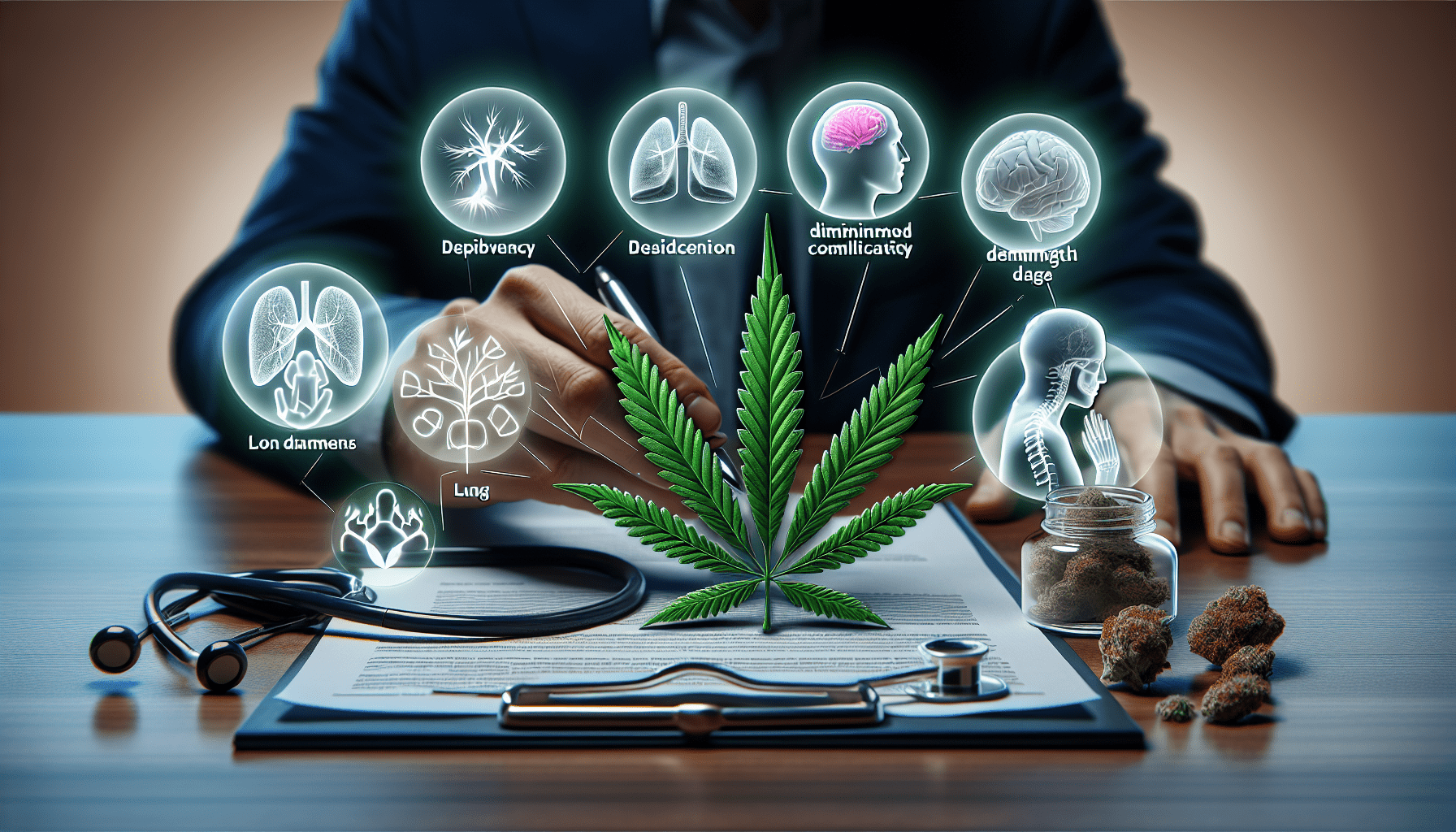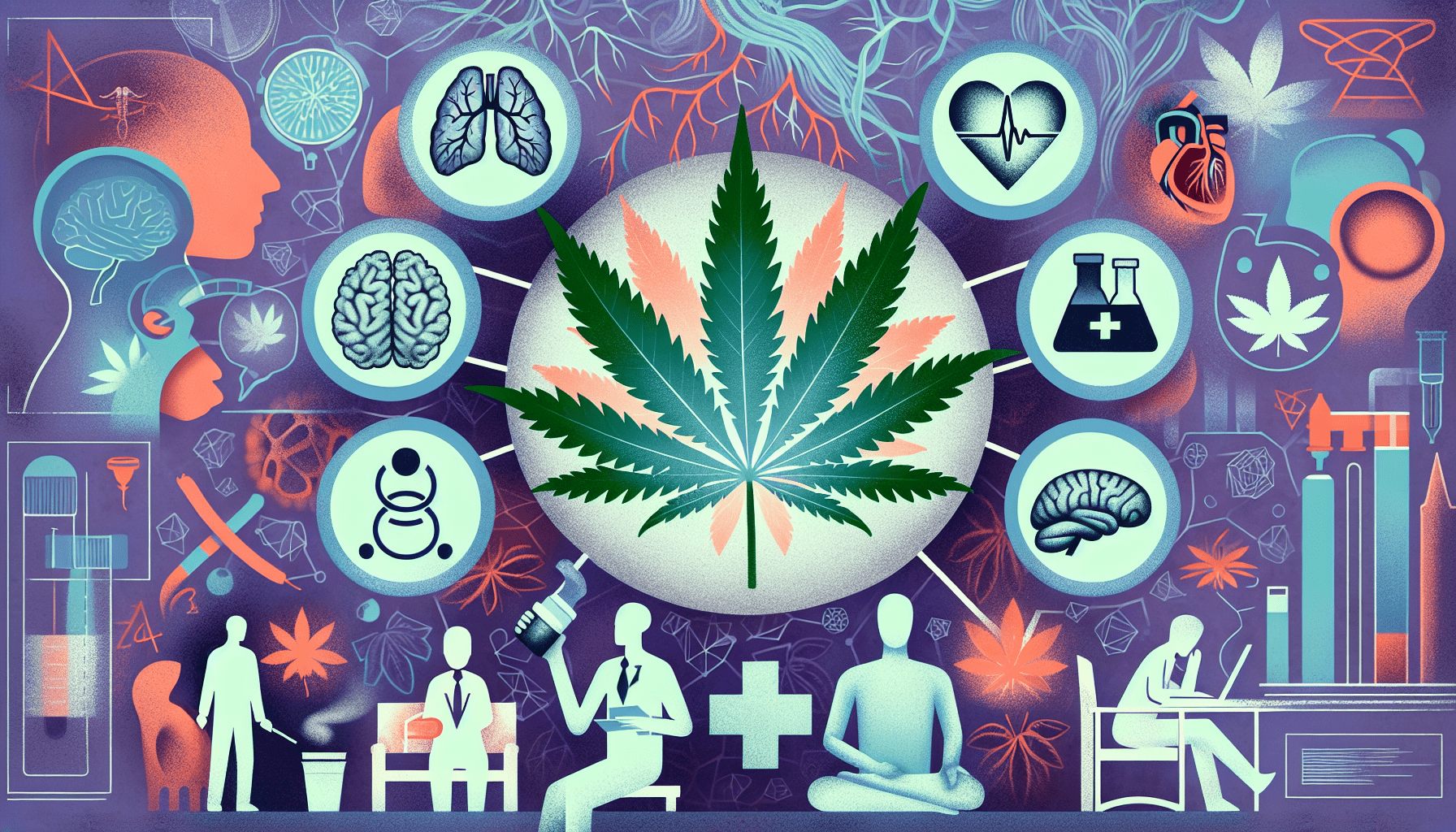When it comes to managing pain, many people have turned to cannabis as an alternative solution. With its increasing popularity, it’s important to understand the potential risks associated with its use. From cognitive impairment to addiction potential, this article explores the potential downsides of using cannabis for pain relief. Whether you’re considering trying it or already using it, knowing the risks can help you make an informed decision about your well-being.
Addiction and Dependence
Using cannabis for pain relief carries a potential risk for addiction. While the incidence of addiction may be relatively low compared to other substances, it is still a concern to be aware of. Developing dependence on cannabis is also a possibility, especially with long-term use or higher doses. This means that your body may become reliant on the drug and experience withdrawal symptoms if you suddenly stop using it.
Impaired Cognitive Function
One of the most well-known effects of cannabis is its impact on cognitive function. Short-term memory loss is a common occurrence when using cannabis, which can make it challenging to remember recent events or information. Difficulty concentrating is another cognitive side effect that can make it harder to focus on tasks or retain new information. Additionally, cannabis can impair decision-making abilities, leading to poor judgment and potentially risky behavior.
Psychiatric Effects
Using cannabis for pain relief has been associated with an increased risk of psychosis, particularly in individuals with a genetic predisposition or a history of mental health disorders. Psychosis can include symptoms such as hallucinations, paranoia, and a loss of touch with reality. Agitation and anxiety are also common effects of cannabis use, which can worsen existing anxiety conditions or trigger new ones. Similarly, cannabis has been linked to depression and worsening mood disorders, potentially exacerbating symptoms and interfering with overall mental well-being.
Respiratory Problems
When cannabis is smoked, it can irritate the respiratory system. This irritation can cause symptoms such as coughing, wheezing, and chest tightness. Chronic bronchitis is also a concern for long-term cannabis users who regularly inhale the smoke. The constant irritation of the airways can lead to chronic inflammation and an increased risk of respiratory infections, such as pneumonia.
Cardiovascular Risks
Using cannabis for pain relief can have significant effects on the cardiovascular system. It has been found to increase heart rate, which can be particularly risky for individuals with pre-existing heart conditions. Additionally, cannabis use has been associated with high blood pressure, which can be detrimental to cardiovascular health. There is also a potential risk of heart attack or stroke when using cannabis, especially in individuals with underlying cardiovascular issues.
Impaired Motor Skills
Cannabis use can impair motor skills and coordination, making it difficult to perform tasks that require precise movements. This can include activities like driving, operating machinery, or even simply walking. Decreased coordination can lead to accidents and injuries, both to the individual using cannabis and to those around them. Slowed reaction time is another concerning effect of cannabis, as it can impact the ability to respond quickly and appropriately in potentially dangerous situations.
Negative Effects on Pregnancy
Using cannabis during pregnancy poses significant risks to both the mother and the developing fetus. Cannabis use has been linked to an increased risk of developmental problems in the fetus, including cognitive and behavioral issues later in life. It also has the potential to result in low birth weight, which can increase the risk of various health problems for the baby. Additionally, cannabis use during pregnancy has been associated with an increased likelihood of preterm labor, which can have serious implications for the baby’s health and development.
Interactions with Medications
When using cannabis for pain relief, it is crucial to consider potential interactions with other medications you may be taking. Cannabis can interfere with the effectiveness or side effects of certain drugs, including prescription medications. It is essential to discuss cannabis use with your healthcare provider to ensure that it does not negatively impact the effectiveness or safety of any other medications you may be using.
Legal Consequences
While the legal status of cannabis varies depending on where you live, it is crucial to be aware of the potential legal consequences associated with its use. In many places, cannabis is still illegal for recreational purposes, and using it for pain relief may not exempt individuals from legal repercussions. Possession or use of cannabis can lead to legal issues, including criminal charges and potential jail time. Furthermore, the use of cannabis may also create problems in employment, as some companies have strict drug policies that prohibit cannabis use by employees.
Lack of Regulation and Quality Control
A significant concern associated with using cannabis for pain relief is the lack of regulation and quality control in the cannabis industry. The variability in cannabis products can make it challenging to determine the potency and purity of the substances being consumed. This lack of consistency puts users at risk of consuming impurities or contaminants, which may lead to adverse health effects. It is essential to obtain cannabis from reputable sources and to prioritize product safety and quality when using it for pain relief.
In conclusion, while cannabis may offer potential benefits for pain relief, it is crucial to consider the potential risks associated with its use. Addiction and dependence, impaired cognitive function, psychiatric effects, respiratory problems, cardiovascular risks, impaired motor skills, negative effects on pregnancy, interactions with medications, legal consequences, and the lack of regulation and quality control are all important factors to consider. It is recommended to consult with a healthcare provider before using cannabis for pain relief and to prioritize informed decision-making and responsible use.





